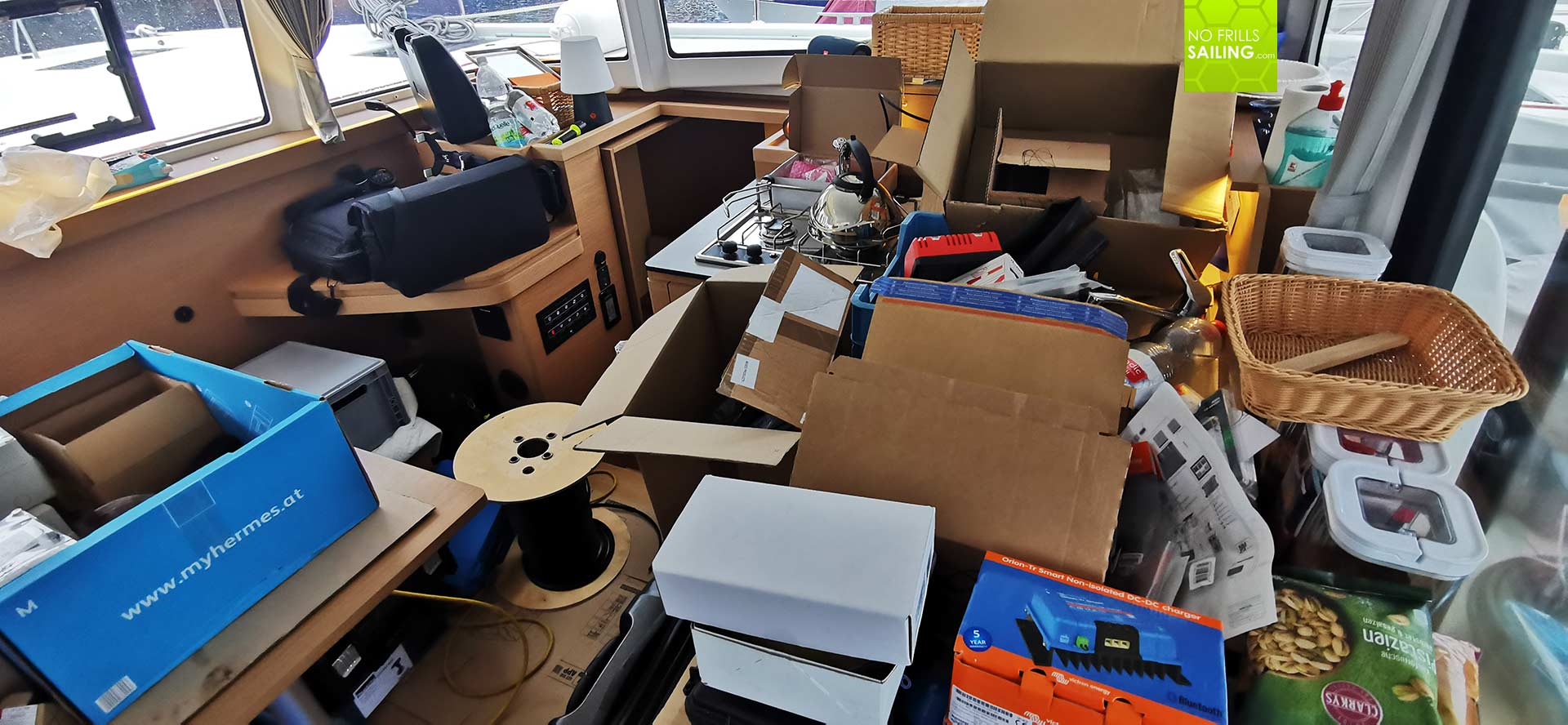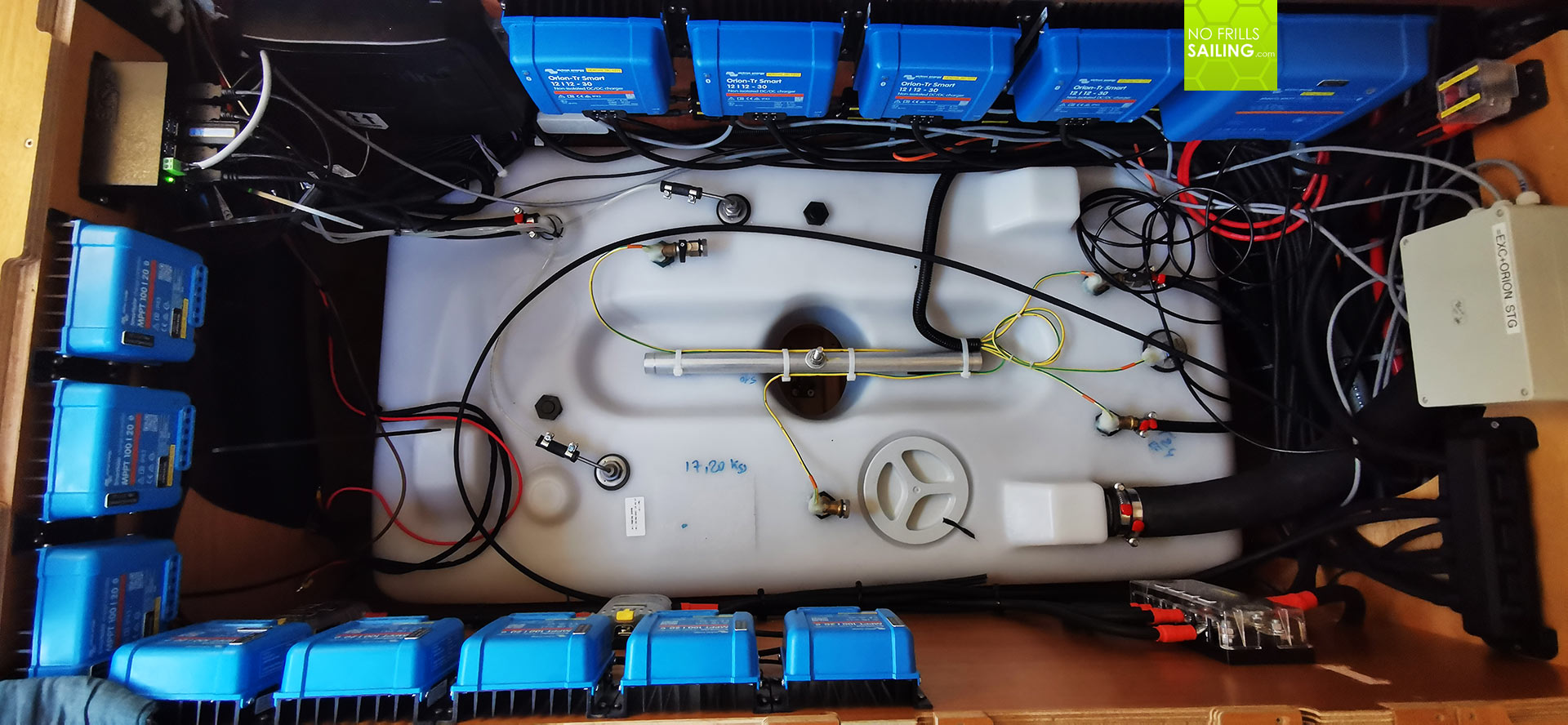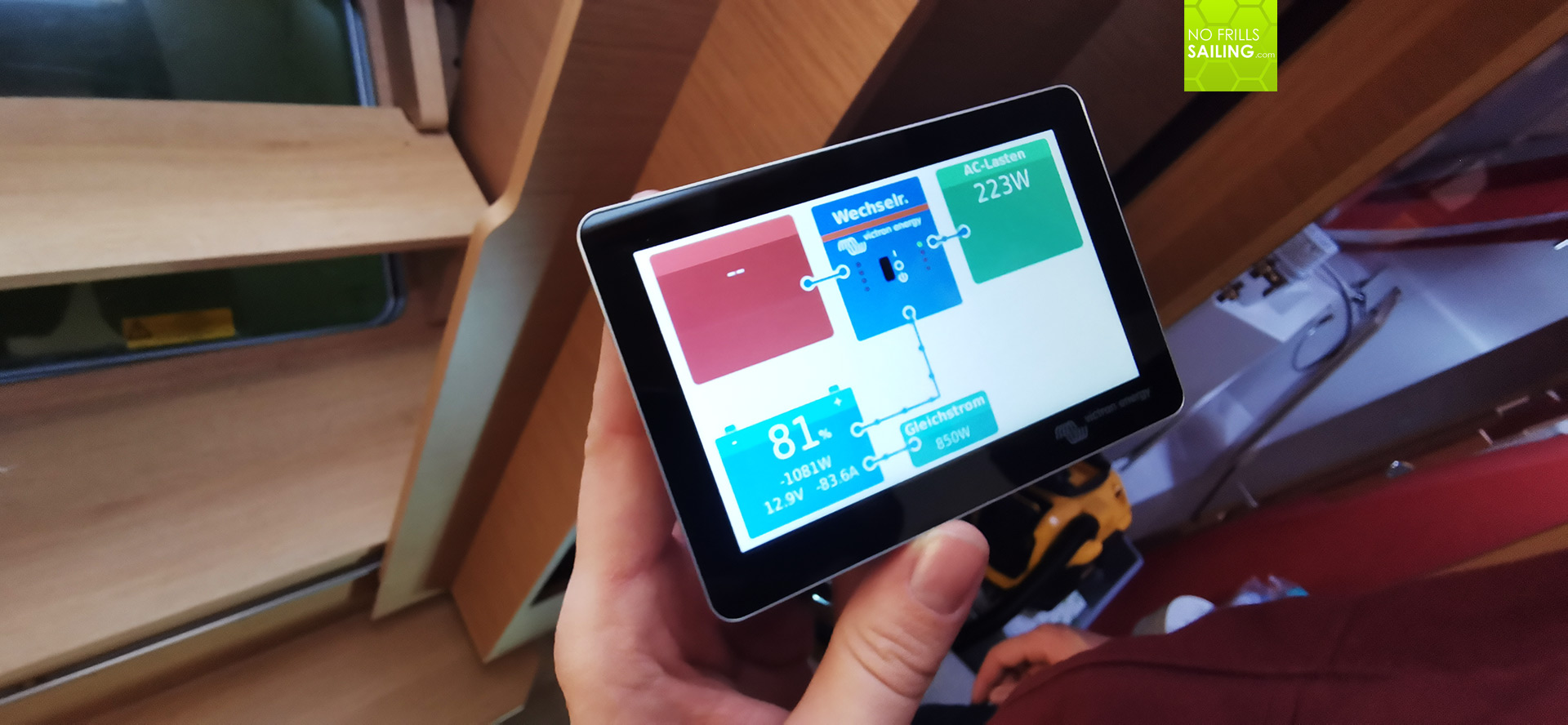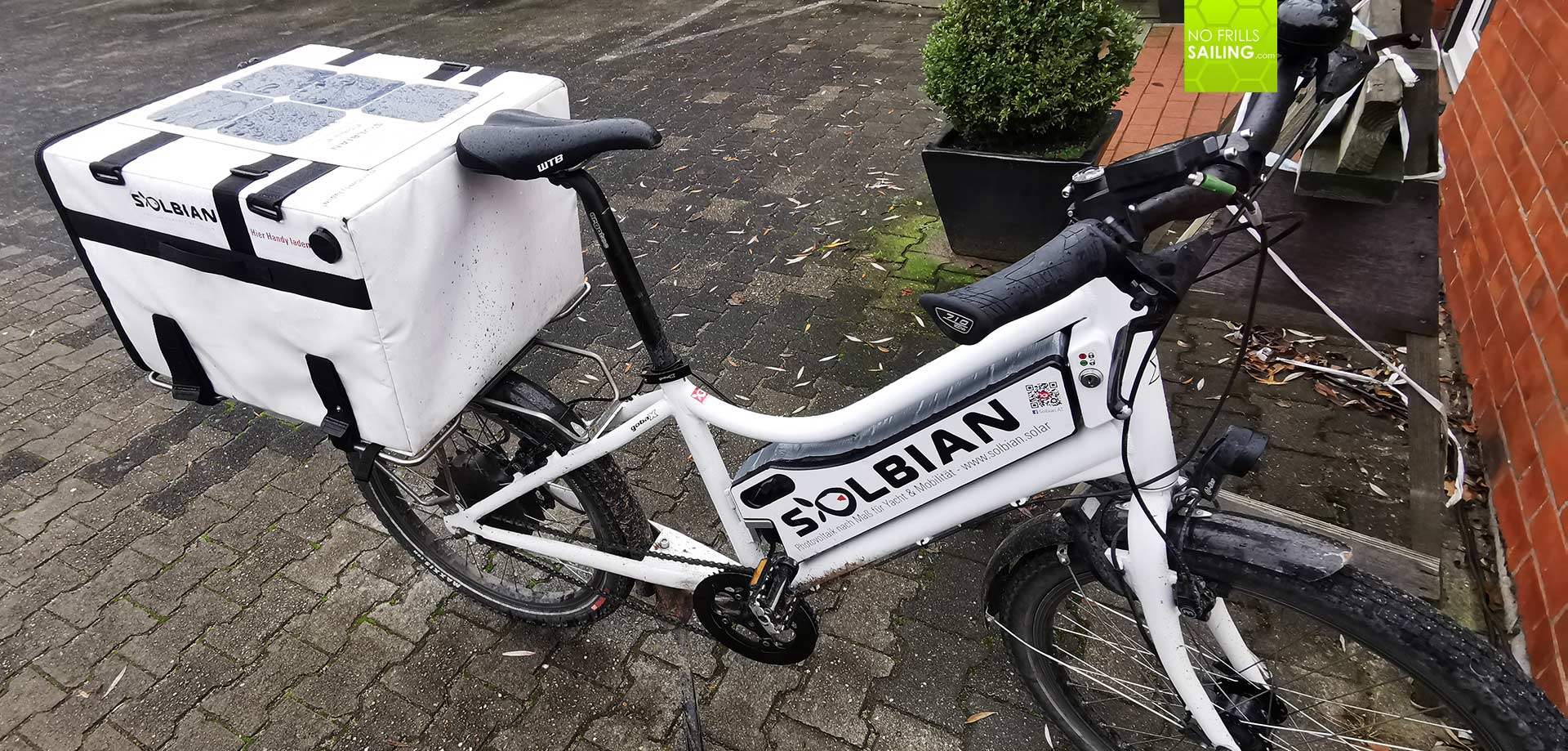It´s a bit disappointing these days as the worsening of the general weather – it´s becoming dark, grey, cold and wet in Germany – kind of coincides with a stalemate of the upgrading-efforts on my own boat. It is just so much to do for my regular job that I simply cannot take my holidays as planned to finally begin to work myself through my to-do list. Well, at least on other projects there is progress indeed and one of these is the solar-upgrade of the sailing catamaran RESIDENZ.

This boat is well known to you, dearest readers, as you may have read through the Excess-delivery articles through Bay of Biscay, English Channel, North- and Baltic Seas. This very same catamaran is now berthed in my home town of Luebeck where a professional yard-service is in turn working their way through a very long list of individual upgrades and add-ons for the owner. One of the big projects is the installation of a powerful photovoltaic array.
Checking status quo of the installation
The plan is to expand the standard solar power capacity of 480 Wp in two steps. The first step is utilizing the big free unused area of the roof of the cat´s superstructure by attaching all in all eight solar panels comprising a total of some 1.700 Wp. That is nearly a fourfold increase of the solar capacity of the boat. Furthermore, the owner ordered a custom made aft Davits- and equipment arch that will reach all along the full 6.5 metre width. Will will also add a further significant amount of solar power panels to this installation, summing up the total capacity at well over 2 kWp.

Entering the catamaran yesterday in the yard I was welcomed by a total chaos: All cushions removed, panels and veneers disassembled, tools and spare parts, cables and empty packages of all colors piling up inside the saloon. Well, no wonder: Installation of such a huge and complex compound is not a starter´s work: I can tell from my own experience. GEKKO´s solar power array is far less complex but it also brings me to my personal limit capability-wise.

Michael Körner, CEO of Solbian Germany, shows me around. The company arrived with a team of three people who have been working on the catamaran for the past four days. They tell me that they start right at the alternators of the engines, kind of “following the current” all the way to the batteries. Solbian is not solely installing just the solar panel-infrastructure. We substitute the standard gel batteries with latest technology Lithium-batteries. That means, a whole new set of supporting equipment like chargers, modulators and converters must be put into service. A truly behemoth-task.
Loads of auxiliary equipment: Learning curve
The whole array features mainly equipment by Victron. The four main battery-banks of the catamaran will be charged through a brand new central regulating unit. Electric current produced by the alternators of the Diesel engines will be run through DC/DC regulators as Lithium-batteries need a well-balanced and pre-arranged type of current and amperage. Each of the solar panels will come with its own solar-charging unit: Series connection of all solar panels is easy but worthless, because of one gets shaded all other will be affected. Isolation diodes will separate each panel and make sure that, if one or more are in the shade, the others keep on working.

In this, I am astonished to see no less than eight solar chargers attached to the circuit. A well-orchestrated ballet of high-tech equipment. Well, remembering my own solar upgrade-project on the First 27 SE my comparably small project is utilizing three solar chargers as well. The nature of the project comes with sheer endless possibilities in terms of monitoring too. The new Victron-display can very figuratively display the status of the whole electric circuit of the boat: Who is charging who and where does the current flows to. Also the system is extendible to monitor the bilge pumps, Diesel tanks, fresh water tanks and battery level. A mighty system indeed!

The guys are confident to conclude works on the “back installation” within two more days. By then the chaos inside the catamaran will be removed, all panels back in place and cushions on the seats. Nothing will be seen as the new installation will be working seamlessly and silently. Michael Körner of Solbian is a bit reluctant when it comes to installing the very solar panels during wintertime. He prefers warmer and above all dryer conditions as the adhesion agents will work far better. Besides, finishing this project only makes sense when the big arch is attached.
Boosting my confidence
I leave the site a bit more confident and eased regarding my own solar power project: Seeing that even the pros need time and effort to install such a complex thing makes my own holding off seem less hesitating. But I also hope that my procrastination time is now ended and I can finally manage to take some of my holidays to start working on GEKKO again. There is so much to do: Sanding down the anti-slip-surface, drilling three holes into the boat, getting the panels glued to the boat and installing the Victron-equipment, from solar charger to DC/DC-regulators. We will see.

Getting into my car I notice Michael´s bike, which, in style, is an electric bicycle with a small solar array re-charging the battery. Poor Michael, I think and smile, with an overcast sky like the one today, the battery won´t be re-charged much on this greyish day so that he most certainly will have to strain his legs for his ride home. Well, that´s the limitation of solar power experienced in real life …
Also interesting to read:
All solar power-related articles by clicking on the hashtag #boatenergy
700 miles on the fast Excess sailing catamaran #excesscatamaran
Micro Cruising comforts for a small sailboat
